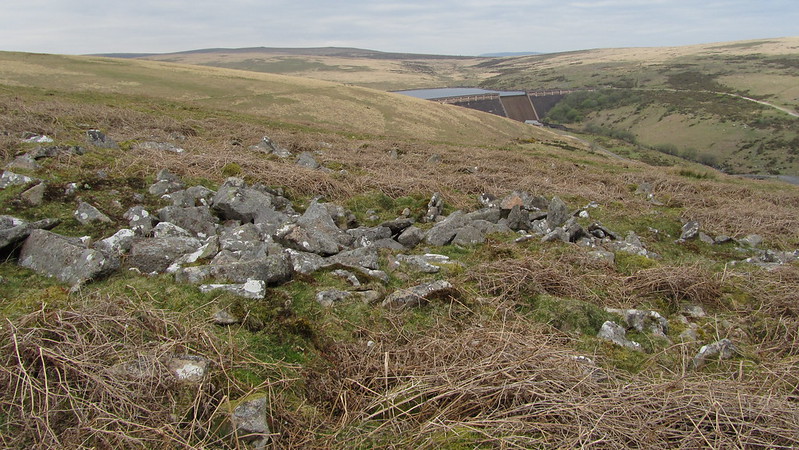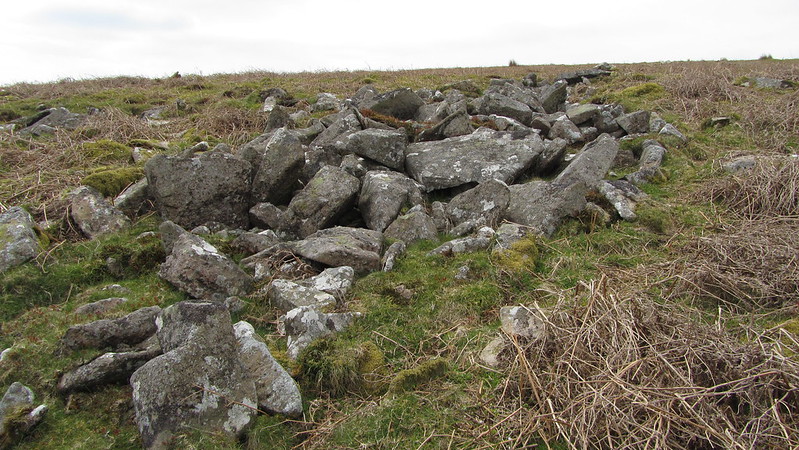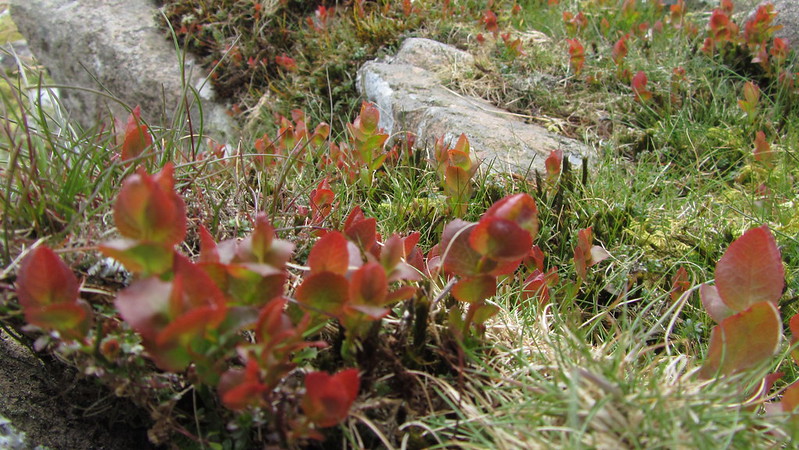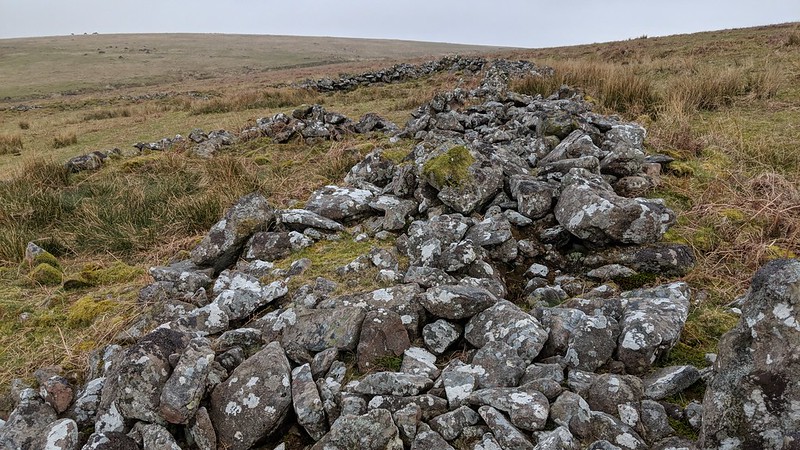TORS OF DARTMOOR
a database of both lesser- & well-known rocks and outcrops
Ryder's RocksRyders Rocks  Ryder's Rocks are a huge disappointment. Given their inclusion on Ordnance Survey maps as far back as the earliest version, with a name appearing in the 1950's, they must have been quite distinctive at some point; indeed, Crossing, in his Guide to Dartmoor says they are "extensive clatter covering much of the hillside."  Much later, Eric Hemery mentions the "clitter known as Ryder's Rocks" and that it "reaches the very bank (right) of the river..." so we can assume they were more prevalent in days gone by. The modern day visitor to the eastern slopes of Zeal Plains will find a very sparse collection of clitter, the majority appears to have been claimed by encroaching vegetation over the years and has disappeared from view.  Of more interest are the nearby Rider's (aka Ryder's) Rings; a walled Bronze Age settlement of 36 hut circle remains, with parts of these enclosures also dating to as late as the Medieval Period. 
| ||||||||||||||||||||||||||||||